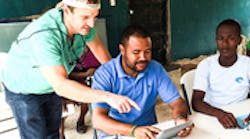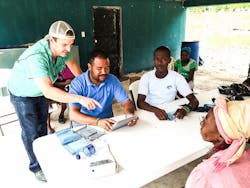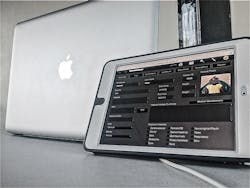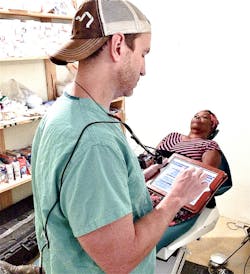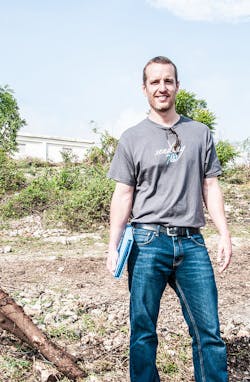Working to meet yesterday’s dreams with today’s technologies
Healing bodies and saving souls have been at the core of medical and dental missions since ancient times. Even as early as the 1800s, Americans traveled around the world trying to help others through medical and dental care. However, mission work has always had its limits. Whether it has been treating patients in underserved areas or teaching locals how to administer care for themselves, there has always been a point when mission teams depart and the people of those areas are left to take care of themselves again.
As someone who has done medical and dental mission work for the past 10 years, I can relate to the bittersweet feelings mission workers often have when they leave a mission site. While we are proud of the work we have done, there is always a feeling, upon leaving a site of “I wish we could have done more.” It was this disheartening feeling, however, that led to a bright idea: A “backpack EMR.”
My typical experience of mission work: A temporary fix
I always thought my scope of medical missions followed the pattern of others: We would travel to another underserved country with a suitcase full of medications and medical tools, and we would hope that we could, in some way, make a difference in someone’s life within three to five days. We would set up a makeshift clinic in a tent, school, or church, and treat as many people as we could.
I went with the notion that I wanted to see and experience another world. I wanted to give my time to helping others and help them change their oral health. It’s always a good feeling to help others who have been suffering and be able to relieve them with temporary fixes for those problems. At the end of the week, we would pack up our clothes and head back to our lives, leaving many problems untreated to be fixed on the next trip—that is, if the next trip were to go back to that same area.
Every time I got home from a trip, that thought of wanting to do more stayed with me for weeks afterward. It stayed, that is, until my calling for medical missions transitioned into a vision to create a way for us to stay connected to those local missionaries and people we leave behind.
Most of us use some form of technology or electronic medical record daily in our offices here in the states. We are typically able to get a second opinion or referral within minutes via an email, text, phone call, or teleconference with a colleague. For the last two years, our nonprofit organization, Sending70, has been working with a FileMaker solutions developer at Quecentric to create a portable electronic medical record for medical missions, essentially a “backpack EMR.”
The vision of Sending70 started from a desire to use modern technology to help create sustainable medical care for medical mission organizations with a long-term focus. Until now, these medical mission trips have only had the option of short-term care with temporary medical fixes. This has been due to trips lasting three to five days in one area, with a rotation of different people every few months. That created a lack of organization and thus a lack of continuity of care.
Using an iPad and FileMaker Go, a free database app available on iTunes, we created a customized solution that allows for continuity of care within a city—or even the jungle. This allows medical missions to create organization and keep track of a patient’s past and current medical conditions and needs. With Sending70, patients can have their blood pressure, diabetes, HIV, or prenatal care needs treated and followed up with a long-term focus. In fact, the possibilities are endless for how many people this technology can help.
The amazing part of the software is its ability to equip a missionary in a remote area with access to the best medical knowledge and advice. All they need to do is obtain diagnostic information about a person with a medical need, and within about five minutes of online time to sync up to an Internet server, they can receive help from a U.S.-based physician for aid in diagnosis and treatment. In this way, they essentially create a virtual clinician for underserved communities and countries where medical care doesn’t exist.
Leaving with a good feeling
One great thing about medical and dental missions is that we always think we are going there to help others, yet the people we meet and our experiences give us more in return. But now, with the help of today’s technologies we can bridge the gap between short-term and long-term medical care. Hopefully, we can humbly give our patients back as much as they give us. Using a mission-based EMR, we can change medical and dental missions to an extent never before seen, bringing the quality we try to provide at home to those who never had access.
---
Contact the author:Patrick Singley may be reached at [email protected].
